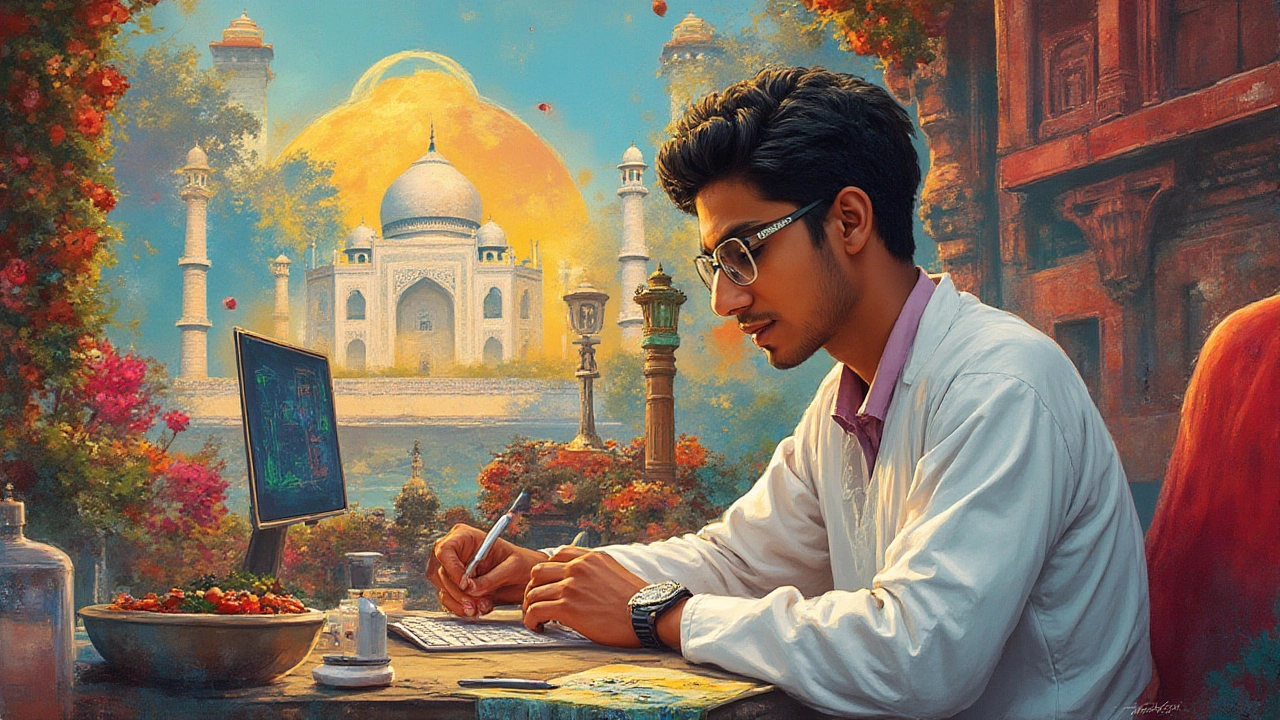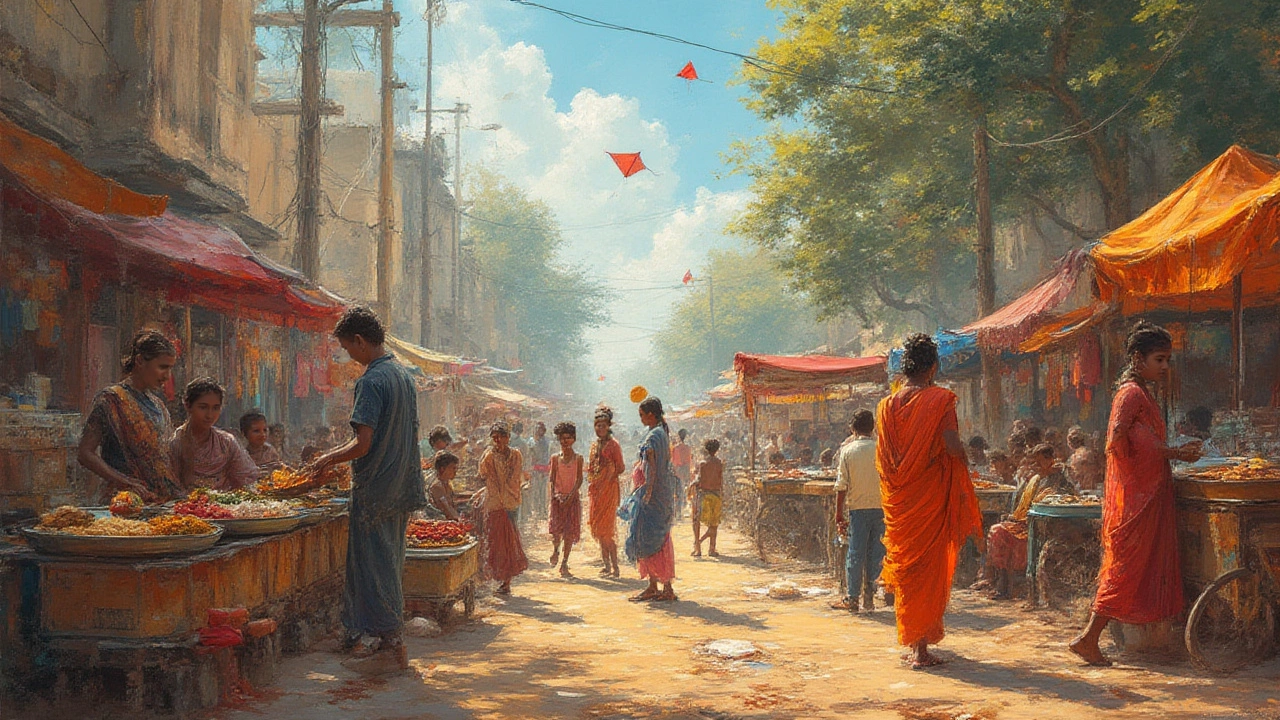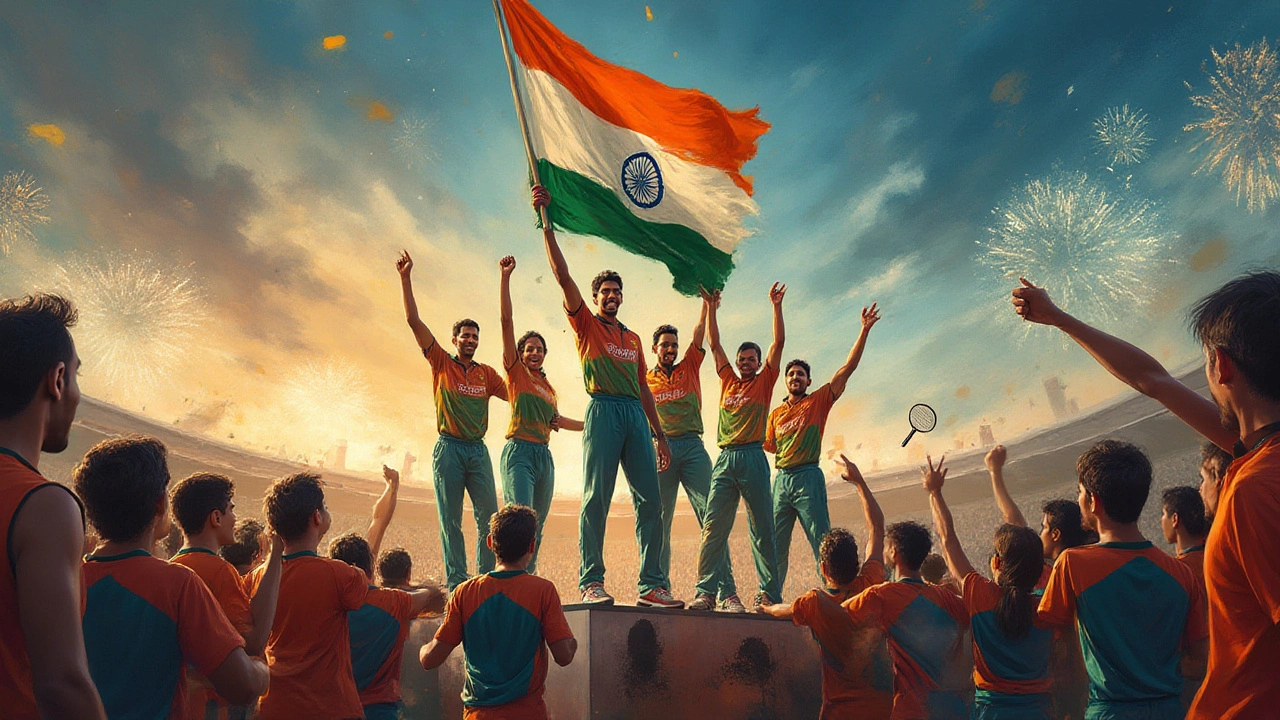
Picture this: a country with 1.4 billion people where you hear more than 20 official languages before lunchtime. India often surprises not just outsiders, but those living here too. It’s not just about spicy food and Bollywood. The pride runs deeper—into the way we work, solve problems, celebrate, and care for each other. India’s pride isn’t nailed to a single story; it pulses through ancient temples, moon landings, spicy street food, tech playgrounds, and wild-card sports dreams. There’s this persistent energy—a feeling that no matter where India stands on the global stage, it’s marching to its own unpredictable but captivating beat.
Trailblazing Innovations and Surprising Firsts
India’s appetite for innovation isn’t some recent trend. Go back centuries, and you’ll find ancient mathematicians scribbling out the idea of zero, a concept most of us rely on every time we check our bank accounts (or hope we’re not dealing in negatives!). Aryabhata, the fifth-century mathematician, didn’t just stop at zero—he cracked the mystery of pi’s approximation and theorized about Earth spinning on its axis. That’s the kind of brainpower India put on the table way before the digital age.
Modern India doesn’t just look back; it aims for the stars. The cost-effective Mars Mission, Mangalyaan, stunned the world by reaching the red planet for less money than it takes Hollywood to make a blockbuster. In August 2023, the Chandrayaan-3 mission landed near the Moon’s south pole—India became the first country ever to pull it off. You’d think such giant leaps would need heaps of cash, but here, ingenuity beats deep pockets every time. The Indian Space Research Organisation (ISRO) has shown that high-tech does not mean high cost. India spends less than 0.1% of its GDP on its space program, yet sends payloads to Mars and the Moon. In fact, here's a quick India pride comparison:
| Space Mission | Country | Budget (USD) | Key Milestone |
|---|---|---|---|
| Mangalyaan | India | $74 million | First Asian country to Mars |
| Curiosity Rover | USA | $2.5 billion | Mars rover landing |
It’s not just about space. Indian doctors invented the world’s first cataract surgery techniques long before anesthesia was a thing. Fast-forward, and today Indian startups make headlines for frugal innovation—think of the Jaipur Foot (a low-cost prosthetic), frugal ventilators during Covid-19, and UPI (Unified Payments Interface), which is revolutionizing digital payments and getting adopted worldwide (seriously, France and Singapore have signed up to use it!).
Richness of Indian Culture: Not Just One Story
Ask an Indian what gets them grinning with pride, and you might get different answers from every corner of the country. That’s because Indian culture refuses to fit into a tidy box. We love ancient traditions, but also embrace chaos and change. Where else can you step outside and run into a classical dancer, a punk street artist, and a Sufi qawwali singer—on the same block?
India’s art scene is bold. Yes, there’s Bollywood dancing on every smartphone screen—and it’s dancing its way into hearts around the globe. But classical forms like Bharatanatyam, Kathakali, and Odissi have stamped their authority over centuries. The world’s largest religious gathering, the Kumbh Mela, feels like a cross between a spiritual Woodstock and the world’s biggest family reunion. These are not just events—they’re living proof of India’s talent for sustaining rituals on a massive scale.
Language is another source of deep pride. Hindi is the world’s third most spoken language. Bengali literature gave us poets like Rabindranath Tagore, the first non-European Nobel laureate. Step into a Chennai coffee house and the talk will be in Tamil, a language with a history stretching back over 2,000 years. Don’t even get me started on Indian festivals: Diwali’s lights, Holi’s colors, Eid feasts, and Christmas bake-offs—each has its own flavor, each is a reason to come together and celebrate.
Indian textiles are everywhere—khadi, the homespun cloth woven by Gandhi himself as an act of rebellion, and now, organic fashion’s darling. Indian craftsfolk have been block-printing, tie-dyeing, and weaving long before “handmade” became an Etsy trend. The Sensex (India’s stock exchange), sways to the rhythm of Mumbai’s street food stalls where vada pav and chai fuel ambition. Culture here doesn’t just sit on a pedestal; it’s woven into daily life.

World-Class Food: Spice, Innovation, and the Power of Community
Nothing quite says “India pride” like an Indian kitchen at breakfast time—dosas crisping, masala chai bubbling, and someone shouting for more chutney. Indian food is as varied as its people. North India brags about creamy paneer, butter chicken, and rotis. The South loves dosas, idlis, and coconut-laced curries. The West throws in pav bhaji, dabeli, and street-side bhel. The East answers back with fish curries and sweets that could tempt anyone away from their diet plans.
What’s mind-boggling is how regional food travels and evolves. Pav bhaji came from mill workers who needed a quick, filling lunch. Butter chicken was an accidental masterpiece in Delhi, when cooks tossed leftover tandoori chicken into a spiced tomato-butter sauce. Every region brings something new—and people are fiercely proud of their signature dishes.
But food is about more than flavor. The Indian tradition of “langar” in Sikh temples, where anyone can get a hot meal regardless of background or belief, is a living lesson in sharing. During disasters like floods or the pandemic, community kitchens and food carts sprang up almost overnight, offering free meals. It’s an unwritten rule: nobody should go hungry if someone can help it.
If you’ve ever seen the Mumbai dabbawalas—lunchbox carriers—delivering thousands of home-cooked meals to offices with barely a delivery gone wrong, you’ll get why Harvard Business School sends researchers to study their error rate (it’s astonishingly less than 1 in 6 million deliveries). Indian pride isn’t just about what we eat, but how we feed others.
Sports and Stories of Grit
Cricket runs in Indian veins (and causes a few family arguments). Since winning the 1983 World Cup, Indians have looked at wickets and boundaries differently. In 2011, the country erupted when we reclaimed the title under MS Dhoni. But pride isn’t restricted to cricket anymore.
Badminton stars like PV Sindhu and Saina Nehwal have shown girls everywhere that small-town dreams matter. Wrestler Bajrang Punia and boxer Mary Kom inspire entire villages. In 2024, Neeraj Chopra brought home another Olympic gold in javelin. These wins are not just stats—they’re symbols for families who save every rupee for coaching, kids who run barefoot on dusty playgrounds, and wild dreams fueled by ambition (and sometimes, by masala chai from roadside stalls).
If you enjoy numbers, here’s a table showing how India’s medal tally keeps rising at the Olympics:
| Year | Gold | Silver | Bronze | Total Medals |
|---|---|---|---|---|
| 2016 (Rio) | 0 | 1 | 1 | 2 |
| 2020 (Tokyo) | 1 | 2 | 4 | 7 |
| 2024 (Paris) | 2 | 3 | 6 | 11 |
Sports cultures are shifting. Kabbadi leagues sell out stadiums. Football finally has a league worth following. Anyone who’s watched a para-athlete like Avani Lekhara win gold knows that Indian pride is fueled by beating the odds, not just the opponent. When the stakes are high, the entire neighborhood huddles around tiny TVs; even my husband Rohan gets uncharacteristically animated (and he's usually unfazed by chaos!).

Living Heritage, Global Impact, and Everyday Resilience
This year, over 200 million young Indians are training for jobs that barely existed a decade ago—app developer, YouTube creator, drone engineer. India’s “digital public infrastructure”—from Aadhaar (the world’s largest biometric ID program) to digital banking—pulls millions out of poverty and gives them a real chance. Global CEOs like Sundar Pichai and Satya Nadella out of India show that you can start small and make it big in Silicon Valley.
But for all the startup glitz, pride also grows quietly. Think of the Kumaoni women running self-help groups, or the community teachers in Bihar bridging learning gaps post-COVID. These stories don’t always get headlines, but they’re the backbone of progress. Indian resilience shows up in crowded Mumbai locals and Ladakh’s frozen deserts, in IT startups in Bangalore and handloom weavers in Kanchipuram.
Yoga, Ayurveda, and Indian cuisine don’t just stay local. International Yoga Day on June 21 lights up New York's Times Square and Paris parks with sun salutations. Ayurveda clinics are springing up from Berlin to Bali. Indian music festivals draw fans from Tokyo to Spain. No matter where you land, you’ll run into an Indian restaurant or corner shop—and most likely hear a story about someone who made it from scratch.
Sure, India isn’t perfect. There are hard realities—gaps, growing pains, challenges that feel too big. But pride comes from the comebacks, not just the celebrations. It’s the daily hustle and hope that, no matter what happens, tomorrow has more flavor, more color, more story. That’s India’s secret.